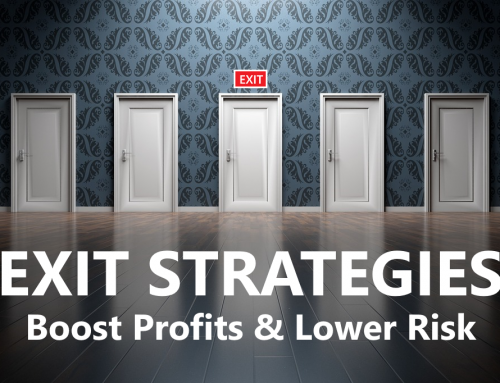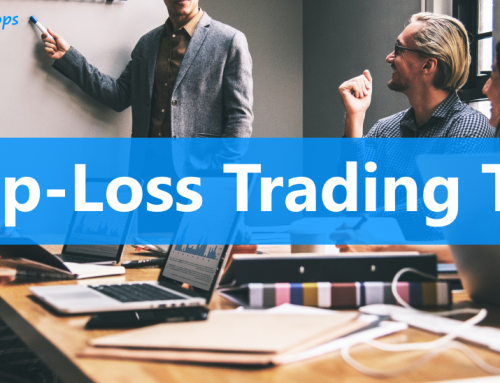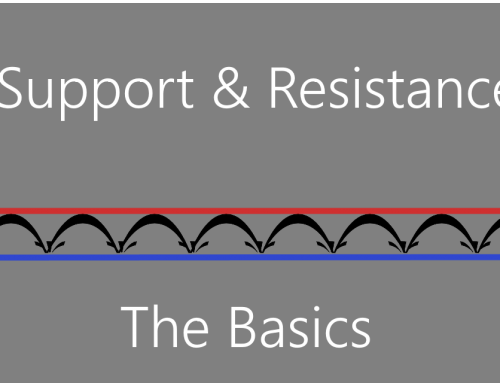Too often traders are inordinately focused on getting into the right stock at the right time at the right price. While important, it’s everything leading up to being in the right stock (discipline and planning) and getting out of it that will ultimately determine the success of the trade.
Next time someone tells you their stock portfolio is up by 50%, congratulate them, then ask “What have you done to protect your profit?”
If they look at you with a puzzled expression on their face, then you know their 50% paper gain could easily be lost within a matter of days or weeks. If they tell you they have an exit strategy with Stop Losses in place to protect a large percentage of their gain, then you know they are probably prepared.
When a trade is completed, our profit will be based on the timeliness of our exit. In volatile markets where winning trades can quickly turn into losses, it is important to cut losses early and protect profits.
Without a well thought out exit plan, it doesn’t matter how much time you spend picking the right stock or the optimal entry point. Unfortunately too many short-term traders don’t understand how valuable a predetermined exit point is.
No one likes to admit they’ve picked the wrong stock or made a timing mistake, but the worst mistake is not planning for it. Trying to make an exit decision while watching the trade go against you is nerve-wracking and often leads to less than desirable results. What should have been a calm, preventive and well thought out decision can all of a sudden become an emotional one and before you know it you are “Riding a Loss.” AND, the longer you ride it the more difficult the decision of “when is enough, enough?”
Consider the following example:
“Yesterday I entered two trades on the same stock, of which I planned a downside exit on one and not on the other. On the first purchase I planned for an exit and got stopped out with a mere 5% gain. Later in the day the stock came back, soared and I’m up 25% on the second trade. Not a bad day, up an average of 15% between the trades for the day. But today, ouch! After the open, a major company issued an earnings warning and the market tanked. Not having a stop in place I rushed to my computer and found that my “winner” as of yesterday was now sitting at a loss of 20%, effectively rendering a 15% averaged loss over 2 days.”
What ultimately determined the success of these trades? It was the exit point. Had a Stop Loss been used on both trades it could have been a profitable situation. Although this is only a hypothetical example, it clearly illustrates that no matter where traders enter a stock, the bottom line profit will depend on where they exit. Had a third position been added with a wider stop it may have run up to a 100% profit. It all came down to the exit point.
When you are planning trades, and right up until the moment of the entry, you are in control. Thereafter, however, the market will dictate whether the stock rises or falls. You can’t control this, just like you can’t control with 100% certainty what amount of profit (or loss) will result. But what you can control is minimizing losses and protecting gains through Stop Losses.
What is a Stop Loss?
Most short-term traders are at least aware of stops, but since this is such a vital aspect to managing risk, let’s digress to “trading 101” for a moment.
A Stop Loss or “stop” is a type of sell order used to literally do what it says, “Stop Losses.” Putting stops in place on all positions forces traders to calmly decide, “when enough will be enough” in advance. They can be used to minimize losses or to protect gains. Yes, you will lose on some trades, but the trick is to keep losses manageable. Whether there is specific news particular to a stock, or the entire market is crashing, the stop will get you out, and depending on the position at the time, it will either minimize the loss or protect the gain.
The most commonly used Stop Loss is a “Stop Order.” This type of order authorizes the broker to put in a sell order when the stop price is reached. A Stop Order turns into a Market Order when the stock’s price reaches the price that you’ve set. In effect, the stock will be sold immediately or else at the “best available market price” regardless of the price. There is a very good chance of a stock selling at a price lower than the stop price, but from time to time it has been seen to fill at a price slightly higher than the Stop Loss.
A “Stop Limit” is much the same as a Stop Order, but instead of turning into an executable Market Order it becomes an executable Limit Order. A Stop Limit Order says in effect that you want to sell if the price falls to a certain level, but you won’t take any price lower than the Stop Limit. If you have placed a Stop Limit Order of 50 and the price falls to 49 before it can be executed, your Stop Limit Order won’t get filled.
The limit price must be first triggered to activate the stop, and then it must stay there long enough to get executed. The reason a Stop Limit Order may not be filled is because the orders are put into sequence by the exchanges. If the price is falling fast and is below the limit price before the exchange gets the order at the top of the sequence, it may not get filled. As you can imagine, this could be very dangerous, and if not cancelled, would only serve the purpose of being executed if the price of the stock bounces off its low and moves back to or above the Stop Limit price.
From time to time you may also hear the term “Trailing Stop.” A Trailing Stop can be either a Stop order or Stop Limit but is one that moves in the direction of the trade, initially minimizing losses. As time goes on, a Trailing Stop will protect a larger and larger percentage of any profits. Although the feature of Trailing Stops is gaining popularity, as a general rule of thumb, traders must still take action to cancel an existing stop and replace it with a new stop order. In the future trailing stops may become a standard feature among brokerages, so check with your broker from time to time. At some point, it may be possible to set your own “Trailing Stop rules,” walk away and forget about it.
Why Don’t All Traders and Investors Use Stops? Those of you who have the opportunity to communicate with fellow traders may hear some very successful traders argue that they never use Stop Losses, at least not in the mechanical sense of actually entering a Stop Loss Order (Stop) with their broker. However, if they are planning their trades and trading their plan, successful traders WILL have a price “in mind” at which they will exit the trade if it is not going in the direction they intended. This is a “Mental Stop” that, if adhered to, can be just as effective as entering a Stop with your broker.
Note the operative phrase, “if adhered to,” which is synonymous with discipline, which some traders have more of than others. If you are able to monitor and execute “Mental Stops,” then great, by all means do so. But, if you are planning to walk away from the ticker screen and take a break, then a “Mental Stop” or an alert in your trading system doesn’t do much for you because you are not there to execute. Execution . . . The key element of actually stopping a loss.
If stops are such a good way to avoid riding losses, why doesn’t everyone use them? There are many reasons why stops are not widely used but the primary ones are:
* * Many traders are just unaware. With the advent of online stock trading and all the hype about managing your own trades, a new generation of “short-term traders” has sprouted out of nowhere. Though “ignorance may be bliss” in some situations, it is more often suicidal in short-term trading. In these instances new traders may have the common sense to plan a trade or follow a trend but in many cases their knowledge may be limited to knowing how to place a buy or sell order.
* * Not all brokers allow Stop Losses (which contributes to the ignorance factor) or they may only allow stops on certain stocks or on stocks that are above a certain price. This is nonsense and is not in the best interest of the trader. If you want to protect a trade by using stops, as is strongly recommended, then shop around and get another broker.
* * From time to time a stock exchange will place a temporary, stock- specific ban on stops due to market volatility. When this is in effect there is nothing you can do about it. Note that it is temporary and you can choose not to trade the stock, or to use a “mental stop.” If you choose the latter make darn sure you can monitor the stock’s performance and be ready to execute the “mental stop” if the situation arises.
* * Finally, there are instances where long-term investors with as much as 80-90% appreciation in their portfolio may not want to incur the taxable gain of selling, even if the stock is falling in price. This is a personal decision, but if nothing else, an understanding of stops makes this an informed decision.
Excerpted from “The 4 Biggest Mistakes in Short-Term Trading” by Dot Ammons”






